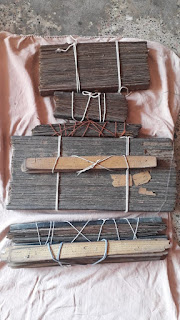The city-based auto driver cum writer’s Tamil novel lockup became the storyline of the box
office hit Visaranai. The film bagged
the Amnesty International Italy’s “Cinema for Human Rights” award in
the 72nd International Film Festival of Venice.
Chandran was a muscleman first and then a writer.
Nevertheless, he says that only the books, which he enjoyed in his teens,
ignited his flair for workouts and made him fancy performing the valorous deeds
of the heroes that appear in those books.
“The books Romapuri
Pandian, Pattampoochi, Kolayuthirkalam and the popular Tamil comics Ambulimama and Pativikramadityan Kathai had a great impact on me. The heroes in
these stories were strong and
adventurous and they fought against evils in the society. They inspired me to
start workouts and become like them. “Says Chandran, who owns a gym in his home.
A man who created a number of youth as champions in
bodybuilding and martial arts, Chandran says:
“ Provide me just a little area, measuring of one’s sleeping mat, I can teach the
nuances of various exercises and convert
anyone into a bodybuilder without
using any fitness equipment “
Chandran philosophizes that performing workouts and
martial arts is the path to attain the wisdom of comprehending body-mind
coordination.
On how workouts and martial arts make the performer
ambidextrous, Chandran explains:
“As we use our hands equally in workouts, the right
and left brains get coordinated. Unless performing such strenuous physical
exercises, I doubt, whether mere meditations prescribed by self-styled god-men
can create the harmony between the two hemispheres of brain. Performance of martial
arts as Silambam, Karate and Kunfu demands the use of both arms. Hence, being
ambidextrous in their stunts, the heroes Bruce Lee, Jackie Chan, Jet Li and
M.G.Ramachandran, the film actor and former Tamil Nadu chief minister, could
scale the heights of fame and carved a niche for themselves in the history of
action movies.
A teenage runaway, Chandran learned lessons from
practical life by taking up odd jobs at places including Vijayawada and Guntur.
He wrote his real life experiences into short stories and novels. Author of the books Boomiyai Kolaikalamaakkum America, Lockup, Kattuthulayinoode Kaatru and Veppamatra Velloliyil, Chandran’s
academic qualification is SSLC.
Link to the article in The New Indian Express http://epaper.newindianexpress.com/c/33953470
















